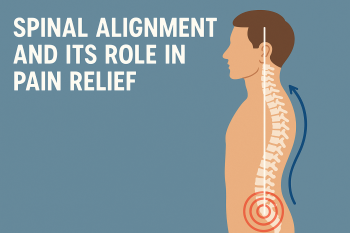
Neck stiffness is one of those annoyances most of us shrug off. You wake up after a rough night of sleep, try to turn your head, and suddenly you feel like a rusty hinge. Sometimes it lingers after a long day at a computer. Other times it sneaks up after carrying groceries awkwardly or dozing off on the couch.
But here’s the curveball: some people notice their hearing changes when their neck is tight or misaligned. And when the stiffness improves, so does the sound of the world around them. It’s not something you’ll see plastered across billboards or in every medical textbook, but in chiropractic practice, this link shows up more than you’d expect.
So let’s dig into why that happens, how the neck and ears are connected, and why chiropractic adjustments sometimes help both issues at once.
The Neck: More Than Just Support
Most of us think of the neck as a stack of bones holding our head in place. That’s true, but it’s also selling it short. The cervical spine—the top seven vertebrae of your backbone—is like a traffic hub where nerves, blood vessels, and muscles intersect.
Nerves: Several cranial nerves (including the ones tied to hearing and balance) pass through or near the upper cervical region.
Blood flow: Major arteries run through small canals in your vertebrae to carry blood into the brain and inner ear.
Muscles and fascia: These layers can tighten, creating pressure that radiates upward toward the skull and jaw.
When one piece of this system goes out of balance—say, a vertebra shifts slightly or muscles spasm—it can ripple into other areas. That’s why something that starts as a “crick in the neck” can sometimes trigger headaches, jaw pain, or yes, even muffled hearing.
How Hearing Gets Tangled Up in Neck Issues
Here’s where things get interesting. Your ears rely on a delicate balance of signals from nerves and steady blood circulation to function properly. If either gets interrupted, the auditory system doesn’t work as smoothly.
Imagine pinching a wire that powers a lamp. The bulb doesn’t go completely dark, but it flickers, weakens, or buzzes.
Similarly, when nerves in the neck are irritated or when circulation through the vertebral arteries is constricted, hearing clarity can be affected.
This doesn’t mean that every case of hearing loss is caused by neck problems—far from it. Aging, prolonged noise exposure, and inner ear disorders are far more common culprits.
But for people who notice their hearing dips and improves alongside neck tension, the connection is worth paying attention to.
What Patients Say
We’ve heard stories that go something like this:
“I came in because my neck was so stiff I couldn’t check my blind spot while driving. After a couple of adjustments, not only was the stiffness gone, but I felt like I didn’t have to turn the TV up as loud.”
“I thought it was my imagination, but every time my neck loosened, my ears felt less clogged.”
Everyday Scenarios That Create the Problem
You don’t have to be in a car accident or suffer a major injury for your neck to cause trouble. More often, it’s the little things:
- Desk work marathons. Sitting for hours with your head tilted forward tightens muscles and compresses joints.
- Bad sleep posture. A pillow that’s too high or too flat can crank your neck into awkward angles all night.
- Stress tension. Ever notice how you clench your jaw or hunch your shoulders when anxious? That stress creeps into your neck muscles, too.
- Old injuries. A whiplash from years ago may heal on the surface but leave lingering imbalances.
Each of these can gradually create enough stiffness to interfere with the neck-ear connection.
What Chiropractic Care Can Offer
Chiropractic adjustments aim to restore motion to joints that have locked up and ease pressure on nerves. When done carefully, this can improve not only neck mobility but also the downstream issues that come with it.
Here’s what a typical first visit looks like:
- History & exam. Your chiropractor will ask about your symptoms, health history, and lifestyle patterns. They may run tests to see how your neck and nervous system are functioning.
- Gentle adjustments. Using hands or a specialized instrument, the chiropractor applies precise force to specific vertebrae. Many people describe it as a quick release, followed by a sense of ease.
- Follow-up care. Depending on your case, you may get exercises, posture tips, or stretches to keep things from tightening back up.
Some patients notice changes right away; for others, improvements come gradually over a few weeks. And again, not everyone with hearing loss will benefit—but if neck tension is part of the picture, adjustments can help uncover what your body is capable of.
Why This Connection Matters
Even if the improvement to hearing is modest, the bigger takeaway is this: the body works as one integrated system. What happens in the spine doesn’t stay in the spine. Pain, stiffness, or pressure in one area often echoes into others.
So if you’ve been treating your neck and ears as unrelated problems, maybe it’s time to see them as two sides of the same story.
Nobody likes living with a stiff neck. Add in the frustration of muffled or fading hearing, and life can feel even heavier. Chiropractic care doesn’t claim to cure deafness or reverse all forms of hearing loss, but it does offer a path toward better alignment, freer movement, and sometimes, clearer hearing.
If you’ve noticed both neck stiffness and changes in your hearing, it may be more than a coincidence. The smartest next step is a thorough chiropractic evaluation to see whether your cervical spine is quietly influencing how you hear the world around you.
Because sometimes, the relief you’re looking for comes from addressing the place you least expect.







Leave a comment